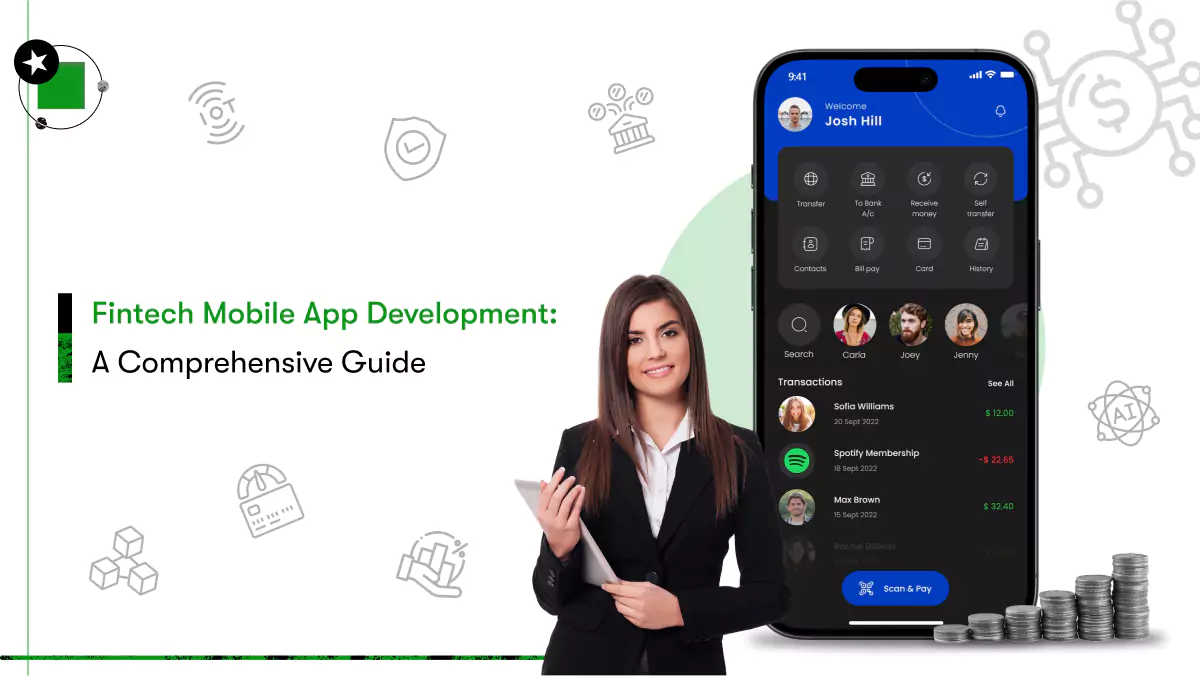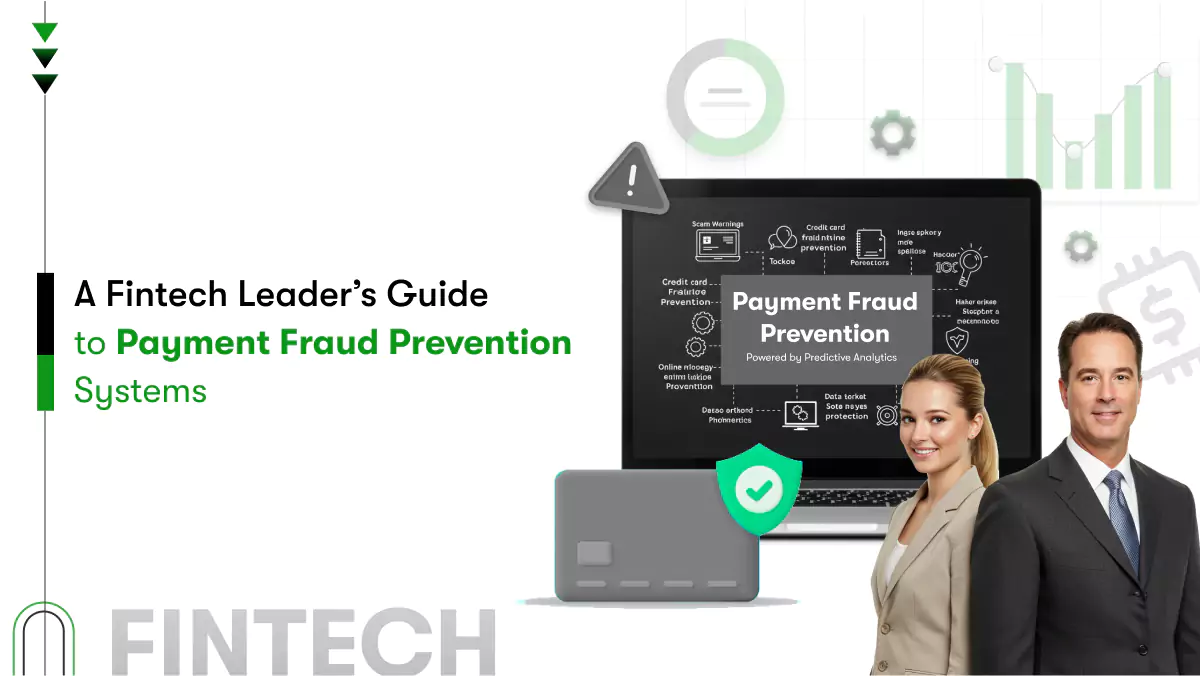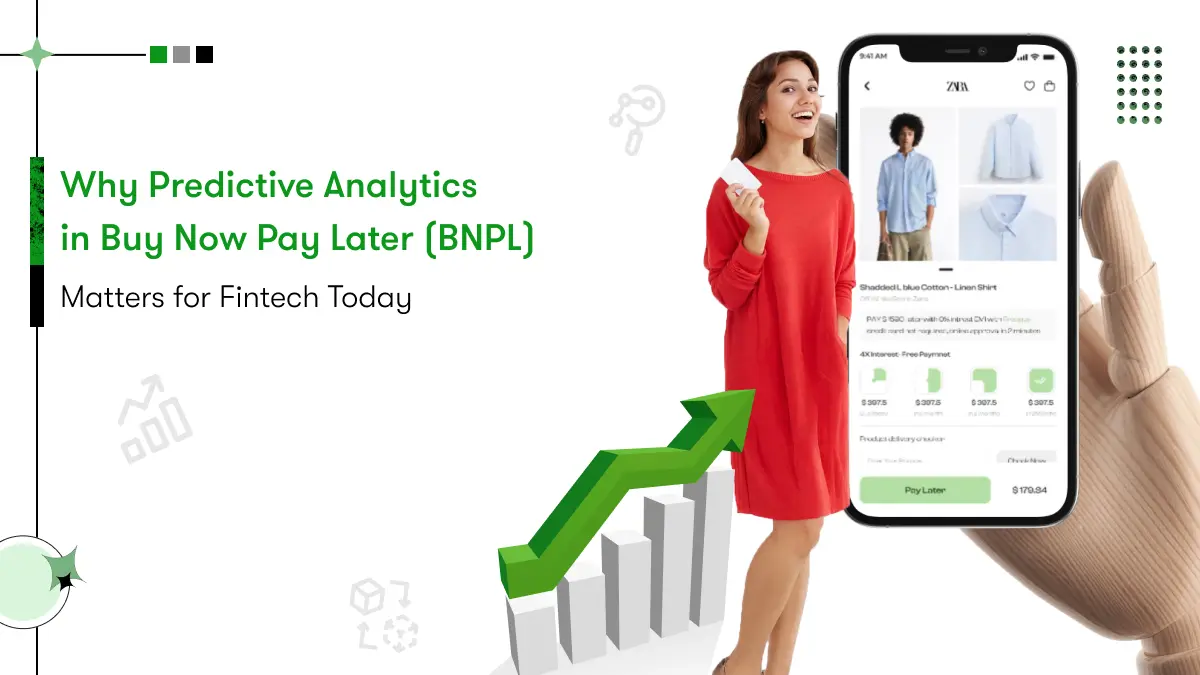P2P loan app development marks a significant shift in the financial sector, moving from traditional lending methods to a more digitized, direct approach. This transformation caters to the evolving needs of modern consumers and investors, offering efficiency and user-centric solutions.
At its core, P2P lending simplifies and streamlines financial transactions. It directly connects borrowers with lenders, eliminating traditional financial intermediaries, which results in faster, more economical services. This innovation has opened new avenues, making financial solutions more accessible than ever.
The P2P lending market is witnessing significant growth. Grandview Research reports that the market size, estimated at USD 5.07 billion in 2022, is expected to grow at a CAGR of 20.2% from 2023 to 2030. This surge is driven by the demand for alternative financing options.
This blog provides a thorough exploration of P2P loan app development. We delve into the essential features, benefits, and strategic development approaches. Whether you’re an entrepreneur, a developer, or an investor, this guide offers valuable insights into navigating the dynamic world of P2P lending.
Why is there so much noise for P2P loan app development anyway?
Not so long ago, people started to see personal loans as a way out to get rid of debts at a lower rate. Not only debts but personal loans also became the primary choice to fund startup businesses. Moreover, statistics report that over half of total Americans (around 131 million), have taken out a personal loan in their lifetime.
Consequently, the circumstances forced lenders to make it difficult for people to qualify for a loan. Sadly, some moneylenders had to stop offering loans altogether in March 2020, right when the coronavirus outbreak knocked the US.
For such financial disasters, technology-driven peer-to-peer loan lending solutions emerged to disrupt the industry.
Read Also: How to Start a Money Lending App Business in the USA Like Brigit?
Okay, I want to make an app like Prosper and LendingClub, but will it be worth it?
Well, look at the projection. It says out loud how much return your investment in P2P loan App Development can potentially gain. You can also accelerate P2P lending app demand stimulating factors with cutting-edge technology to drive more business.
For example, by introducing blockchain to your platform, you can facilitate safe and quick access to funds, eliminating complex and costly processes of banks. Now when you market your app, the audience will more likely give it a shot. Because security is one of the primary prerequisites for FinTech solutions to attract users.
As I said, Prosper and LendingClub are two perfect examples of the P2P loan app development solution. These platforms let their users pay less while borrowing and earn more when saving.
Let’s take a closer Look At LendingClub and Prosper.

LendingClub— San Francisco, California
LendingClub is a web and mobile-based P2P lending application that has been around since 2007. Essentially, it focuses on four types of loans: auto refinancing, personal, business, and medical loans. With over three million members, the Club has given out over $50B worth of loans.
LendingClub is available for iOS and Android users, making borrowing, investing, and managing financial portfolios a whole lot easier.
Prosper— San Francisco, California
Prosper is one of the pioneer peer-to-peer lending marketplaces in the United States founded in 2005. The platform lets investors invest by browsing and selecting loans from listings. In contrast, it recommends loans to borrowers based on their profile. So far, they have facilitated more than $17 billion in loans.
Prosper is also available on iOS and Android apps but only for investors and none for borrowers. Borrowers can use the Prosper online app on desktop and mobile browsers.
Explore our article on 7 innovative loan lending apps in the USA for more examples of successful platforms.
Moving on, you must be worried about how your business will make money out of a P2P loan app. Right? So, let’s find out.
Business Model for P2P Loan App
When strategizing your business plan for P2P loan app development, consider the below widely-used revenue streams.
1. Origination fee. P2P loan platforms charge upfront fees at the loan origination from borrowers. In return, the app reviews borrowers’ creditworthiness, providing access to its investors. The rates are usually between 1 to 6%.
2. Ongoing fee. The app also earns through a margin on the interest rate paid by borrowers to investors. To clarify, if a borrower lends at a 6.5% interest, then the investor is paid 5.5% interest. In that case, the 1% interest rate is received by the platform.
3. Premium subscription. With additional or premium services, many lending marketplaces offer membership and paid accounts and generate extra revenue. For example, LendingClub offers a PRIME subscription plan with a minimum investment of $5,000 for a one-time 0.8% fee.
In-depth Features of P2P Lending apps like Prosper and LendingClub
P2P loan apps have revolutionized the lending and borrowing process with a range of innovative features. The process of P2P lending software development becomes streamlined if there is clarity on the features of the application. Hence, understanding these features is crucial for anyone looking to develop, invest in, or use these platforms. Here, we explore the essential functionalities that set P2P lending apps apart:
User Registration and Verification:
A robust KYC (Know Your Customer) process is integral for security. Users, whether lenders or borrowers, undergo a comprehensive verification process. This includes submitting personal identification, bank details, and, for lenders, proof of funds. Some advanced features you can incorporate include:
Multi-tier Verification Process: Incorporating layers of verification, including biometric scans, document uploads, and real-time photo matching.
Integration with Credit Bureaus: Automated checks with credit bureaus to validate the credit history of borrowers, ensuring reliable risk assessment.
Fraud Detection Mechanisms: Advanced algorithms to detect and prevent fraudulent activities during the registration process.
Credit Score Assessment:
Crucial for risk assessment, the app evaluates borrowers’ creditworthiness. A transparent credit scoring system helps lenders make informed decisions and borrowers understand their loan eligibility. You also have to option to incorporate sophisticated credit scoring systems such as:
AI-Driven Credit Analysis: Utilizing artificial intelligence to analyze borrowers’ creditworthiness based on traditional and alternative data points like utility payments and online transactions.
Transparent Scoring Metrics: Clear explanation of factors affecting credit scores, helping borrowers understand and potentially improve their ratings.
Customizable Risk Models for Lenders: Allowing lenders to set their risk thresholds and preferences for automated loan approvals.
Loan Matching and Customization:
AI-driven algorithms match borrowers with suitable lenders. Users can customize loan amounts, interest rates, and repayment terms, ensuring flexibility and personalization. The advancement in AI technology can now allow applications to intelligently match loans and make other customizations such as:
Personalized Loan Offers: AI algorithms suggest loan offers based on a borrower’s credit profile and financial behavior.
Interactive Loan Customization Tools: Users can adjust loan terms, amounts, and interest rates using sliders and calculators to see real-time changes in repayment schedules.
Peer-to-Peer Negotiation: Enabling direct negotiation between borrowers and lenders for loan terms, fostering a sense of control and mutual agreement.
Automated and Manual Loan Approval:
Lenders can manually review loan applications or opt for automated approvals based on preset criteria. This flexibility enhances the lending process’s efficiency and user experience. A wide range of advanced features can be added to the P2P lending app for operational efficiency, some of which are:
Auto-Approval Based on Pre-Set Criteria: Lenders can set parameters for automatically approving loans that meet their criteria, saving time and effort.
Manual Review with Enhanced Data: For manual approvals, the app provides comprehensive borrower profiles, including financial health indicators and risk analysis.
Notification and Alert System: Immediate alerts to lenders for new loan requests and updates on the application status.
Payment Gateway Integration:
Seamless integration with various payment systems ensures easy and secure transactions. Digital wallets, bank transfers, and other payment methods are supported for user convenience. To make the payment process of your app more comprehensive and give a better user experience, you may consider incorporating a few additional features such as:
Multiple Payment Methods: Support for various payment methods like bank transfers, credit/debit cards, and digital wallets to cater to diverse user preferences.
Real-Time Transaction Processing: Ensuring swift and seamless money transfers between parties, enhancing the user experience.
Encryption and Security Protocols: High-level encryption and security measures to protect sensitive financial information during transactions.
Real-Time Analytics and Dashboard:
Both parties have access to dashboards displaying real-time data on loan status, repayment schedules, and transaction history. This transparency is key to building trust and maintaining user engagement. Moreover, you can provide advanced predictive analytics or other interactive features in your application to make it stand out, such as:
Customizable Dashboard Views: Users can personalize their dashboard to monitor key metrics like loan balances, upcoming payments, and investment returns.
Predictive Analytics for Financial Planning: Utilizing data analytics to provide borrowers and lenders with insights on financial trends, potential risks, and opportunities.
Interactive Visual Reports: Graphs and charts for a more engaging and easily understandable view of financial data.
Chat and Support Features:
In-app communication tools facilitate interaction between borrowers and lenders. Support features like live chat and help desks enhance user experience and provide necessary assistance. You can enhance this support and communication process by providing advanced features such as:
In-App Messaging and Negotiation Tools: Secure communication channels for borrowers and lenders to discuss loan terms or address queries.
Automated Customer Support with AI Chatbots: Instant support for common queries and guidance, enhancing user engagement.
Human Support Integration: Availability of human customer support for complex issues, providing a personalized touch.
Compliance and Security Measures:
Adhering to legal and regulatory requirements is paramount. The app includes features for data protection, fraud detection, and compliance with financial regulations. You can curb fraudulent activities and improve compliance with your application by incorporating a few technologies and features such as:
Regular Legal Updates and Compliance Checks: The app stays updated with the latest financial regulations and compliance standards.
Advanced Fraud Detection Systems: Utilizing AI and machine learning to identify and prevent fraudulent activities.
Data Protection and Privacy Safeguards: Adherence to data protection laws like GDPR, ensuring user data confidentiality and integrity.
By integrating these functionalities, you can develop a P2P lending app that offers a comprehensive, user-friendly platform for digital lending. These features not only streamline the lending process but also ensure security, transparency, and compliance, which are vital in the financial domain.
The real value of these features unfolds when we look at the tangible benefits they offer to their users. From more attractive loan conditions to improved investment opportunities, P2P lending apps are redefining financial interactions for both borrowers and lenders. Let’s delve into these benefits to see how they translate into real-world advantages for all parties involved.
Benefits of P2P Lending Apps for Borrowers and Lenders
P2P lending apps have redefined the lending landscape by offering unique benefits to both borrowers and lenders. Let’s explore these advantages in detail:
P2P Loan App Benefits For Borrowers:
Lower Interest Rates: Without traditional banking overheads, P2P lending platforms often offer loans at more competitive interest rates compared to conventional banks.
Faster Loan Approval: Thanks to streamlined digital processes and algorithms, loan approvals on P2P platforms are usually quicker than traditional lending methods.
Flexible Terms: Borrowers have the flexibility to choose loan amounts and repayment terms that suit their needs, often with no prepayment penalties.
Accessibility for Diverse Credit Profiles: P2P platforms can be more accommodating for individuals with varied credit histories, potentially offering opportunities to those who might struggle to secure loans from traditional banks.
P2P Loan App Benefits For Lenders:
Attractive Returns: Lenders on P2P platforms often enjoy higher returns on their investments compared to traditional savings and investment products.
Diversification of Investment Portfolio: P2P lending allows investors to diversify their portfolios, spreading risk across different loans and borrowers.
Control Over Investments: Lenders have the freedom to select which borrowers to lend to, based on risk appetite and return expectations.
Enhanced Risk Assessment Tools: Modern P2P platforms provide sophisticated risk assessment tools and credit scoring systems to help lenders make informed decisions.
While understanding the distinct benefits that P2P lending apps offer to borrowers and lenders lays the foundation, it’s equally crucial to navigate the competitive landscape effectively. In a market teeming with innovation, simply offering benefits isn’t enough; differentiation is key. The next step in our journey explores how you can set your P2P loan app apart in a crowded market.
Setting Your App Apart in Today’s P2P Loan App Market

In the rapidly evolving world of P2P lending, standing out requires a blend of innovation, user-centricity, and strategic market positioning. To develop a P2P loan app that not only meets the market’s needs but also distinguishes itself from competitors, consider these key strategies:
Emphasize Personalization:
- Tailor loan options to individual borrower profiles.
- Implement user feedback mechanisms to continuously refine and personalize the lending experience.
Leverage Cutting-Edge Technology:
- Integrate AI for predictive analytics and personalized loan offerings.
- Utilize blockchain for enhanced security and transparency in transactions.
Focus on Exceptional User Experience:
- Design an intuitive and easy-to-navigate interface.
- Ensure swift, responsive, and helpful customer support.
Target Niche Markets:
- Identify and cater to underserved segments, like small businesses or specific industries.
- Offer specialized loans that address the unique needs of these markets.
Ensure Robust Security and Compliance:
- Prioritize data protection and adhere to financial regulations.
- Build trust through transparent practices and strong security measures.
Innovate Continuously:
- Stay updated with the latest financial tech trends.
- Regularly update the app with new features and improvements.
Implement Advanced Analytics:
- Use data analytics for insights into market trends and user preferences.
- Apply these insights to fine-tune your app’s offerings and operations.

P2P Loan App Development Process
Careful planning, execution and investment are required to develop a P2P loan app; it is a multifaceted process. Let’s understand each step involved in the development of a P2P Loan app.
1. Market Research & Niche Identification:
The development journey of a P2P loan app begins with thorough market research and niche identification. This stage involves analyzing the P2P lending landscape to uncover unique market needs, gaps, and opportunities.
By studying financial trends and consumer behavior, developers can gain insights into what potential users seek in a P2P lending platform. This foundational step is crucial in shaping the direction and focus of the app, ensuring that it addresses real market demands and stands out in a competitive space.
2. Defining Target User Personas:
Creating detailed user personas for both borrowers and lenders is the next pivotal step. This involves envisioning the typical users of the app – their financial goals, challenges, technological proficiency, and preferences.
By understanding the distinct characteristics and needs of each user group, developers can tailor the app’s features, functionalities, and user experience to meet these specific requirements, thereby enhancing user engagement and satisfaction.
For insights into other types of loan app development, such as payday loan apps like Earnin, read our detailed guide.
3. Regulatory Compliance and Security Planning:
P2P loan apps operate in a domain where financial regulations and data security are paramount. Early in the development process, it’s essential to assess and plan for adherence to relevant financial regulations, including lending laws and data protection standards.
This stage also involves incorporating advanced security measures like robust encryption protocols and fraud detection mechanisms. Prioritizing security and compliance from the outset not only builds user trust but also ensures the long-term viability of the app.
4. Feature Specification and Prioritization:
Defining and prioritizing the key features of the app is a critical step. This involves outlining essential functionalities such as user verification, credit scoring algorithms, loan matching systems, and efficient transaction processing.
Decisions made in this phase are guided by earlier market research and user personas, ensuring that the app includes functionalities that add real value to its users. Prioritizing features allows for a focused development approach, aligning resources effectively to meet core user needs.
5. Designing the User Experience (UX) and Interface (UI):
The design phase focuses on creating an intuitive and user-friendly experience. Designers craft the UI and UX with special attention to the unique needs of both borrowers and lenders, developing separate user flows for each.
The goal is to ensure that the app is not only aesthetically pleasing but also easy to navigate and use, thereby reducing barriers to adoption and enhancing overall user engagement.
What does it Cost to Develop P2P Loan Apps like Prosper and LendingClub?
The P2P loan App Development Cost is more than just about frontend and backend development charges. Despite hiring mobile app developers, you make many choices for your loan application development. For example, whether developing an Android or iOS app, how many features to add to project requirements, which technologies and APIs to opt for, need complex UI/UX design or simple, etc.
However, from our experience, P2P loan app development may cost anywhere between $30,000 to $100,000 or more based on the features you want to include in your P2P loan app. If you want to manage your budget, I would recommend studying app development cost variation factors closely.
For more on loan lending app development specifically tailored for the USA market, check out our comprehensive guide.
In a nutshell,
“P2P lending mobile app development challenges the loan system’s status quo.”
P2P loan lending marketplaces are a valuable innovation in the finance sector that not only helps borrowers but also lenders to save money. I am sure; that if you research the market, you will find areas that other services haven’t covered yet. Once you have done that, you can get in touch with us for your P2P loan app development requirements.
That’s it. There is your chance to stand. You better start examining the loophole in the current lending system that you can close by developing a P2P lending mobile app. As for the rest of the technical development part, consult with our experts who have been guiding startuppers for ages.












 Contact Information
Contact Information